Your cart is currently empty!
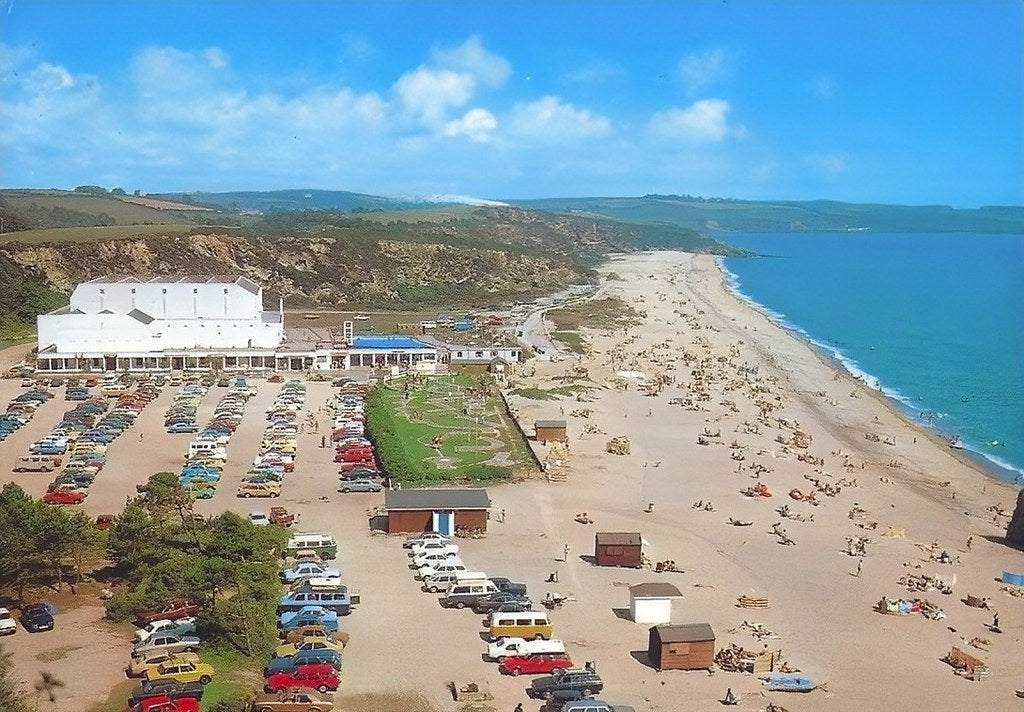
Cornish Riviera Lido & Cornwall Coliseum
Located at Carlyon Bay this site had many names including Cornish Riviera Lido, Cornish Leisure World and Cornwall Coliseum
The sandy beaches at Carlyon Bay are not a natural formation but were actually man-made as a byproduct of the mining industry. Over a period of about 80 years, waste from the china clay mines was dumped into local rivers, most of which emptied out into the bay through a tunnel under the cliffs. Over the years it formed a mile long stretch of beach composed of coarse sand, gravelly quartz, and other minerals.
Local residents soon began using the beach for recreation, even though it was often covered in sticky clay water. One resident recalled, “On reaching the shore, one had to spend much time removing what is called ceramic from your body—the legacy of the clay works.” Someone decided to give the beach three names, the West end was called Crinnis, the east end was Polgaver and the middle bit was Shorthorn. All the later development took place on the Crinnis end. It became the largest stretch of sandy shoreline between Plymouth and Penzance.
Starting in the 1920s a company was formed to buy up and develop the land around the beach. In 1924 a sprawling golf course was built on top of the cliffs and various plots of land were sold off for housing, with the company retaining some as holiday rentals.

The Carlyon Bay Hotel
In 1929 Sir George Collins, who was previously involved with the china clay industry, formed a public company to build an opulent 70-bedroom hotel on the cliffs. It opened in April 1930 and became Cornwall’s only 5-star resort. Originally named the St Austell Bay Hotel it was soon renamed the Carlyon Bay Hotel. The entire building was constructed and furnished in just 9 months.

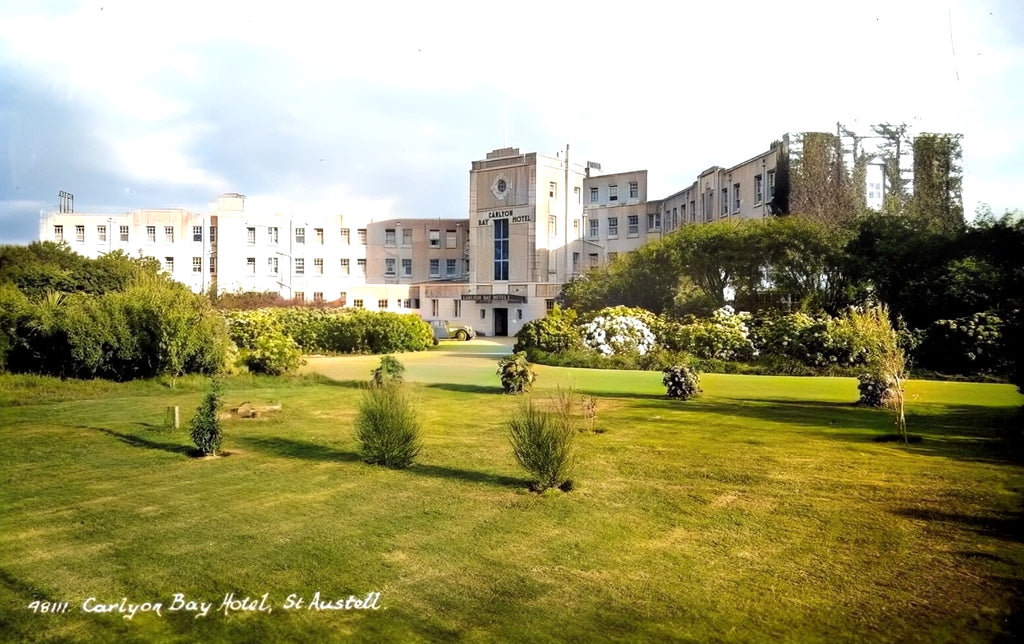
In December 1931 the hotel suffered a devastating fire which destroyed the middle and west side of the building. Remarkably, all 150 guests and staff—including the High Commissioner of South Africa—managed to escape, many in their nightclothes. The hotel was rebuilt and reopened just four months later, a feat hailed as “a record for hotel construction in England.” It was promoted as “the most magnificent, most modern, and most comfortable hotel in the country.”
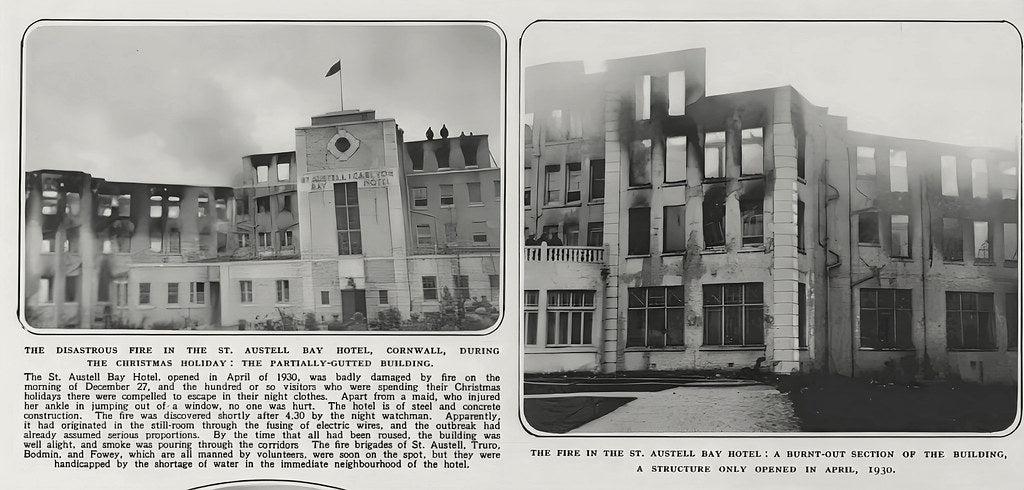
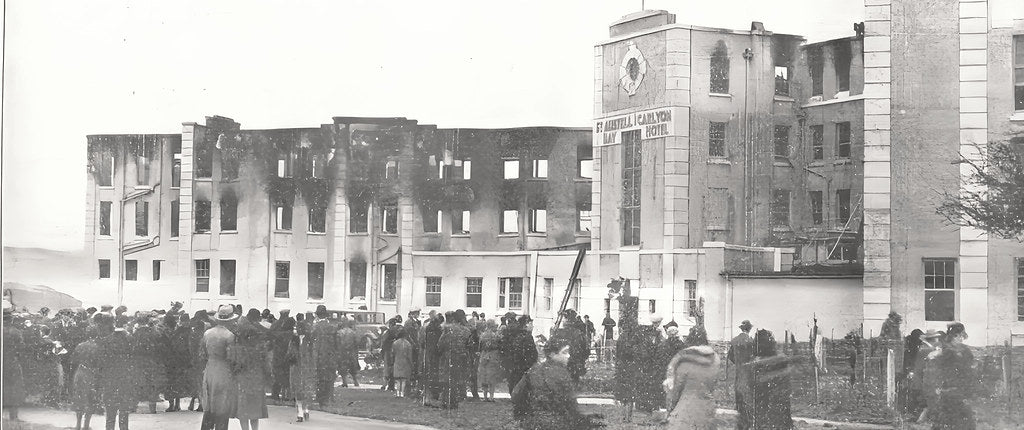
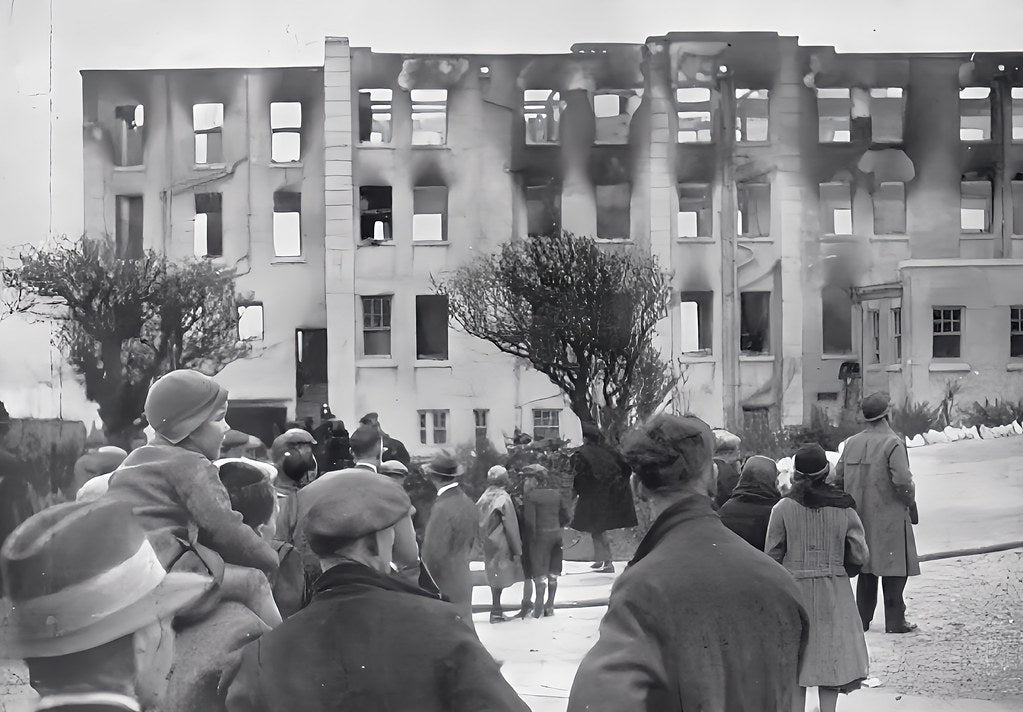
Cornish Riviera Lido
Edward VIII, then the Prince of Wales, was a frequent visitor to the hotel. During one of his stays, he suggested building a sports club on the beach for wealthy locals. This idea was embraced, and in 1932, the Riviera Club was established by a consortium led by Dr. Henry Wright, a solicitor from Huddersfield. Constructed using sand blocks—a mixture of beach sand and cement—the club initially featured an upscale lounge bar with two squash courts in the basement. A new access road was built.
The following year, a large outdoor salt-water swimming pool was added along with 6 tennis courts. Edward VIII and Wallis Simpson became frequent visitors. The public were admitted to the beach and a small cafe was built to the west, along with a putting green, deck chair rentals and paddling pool.
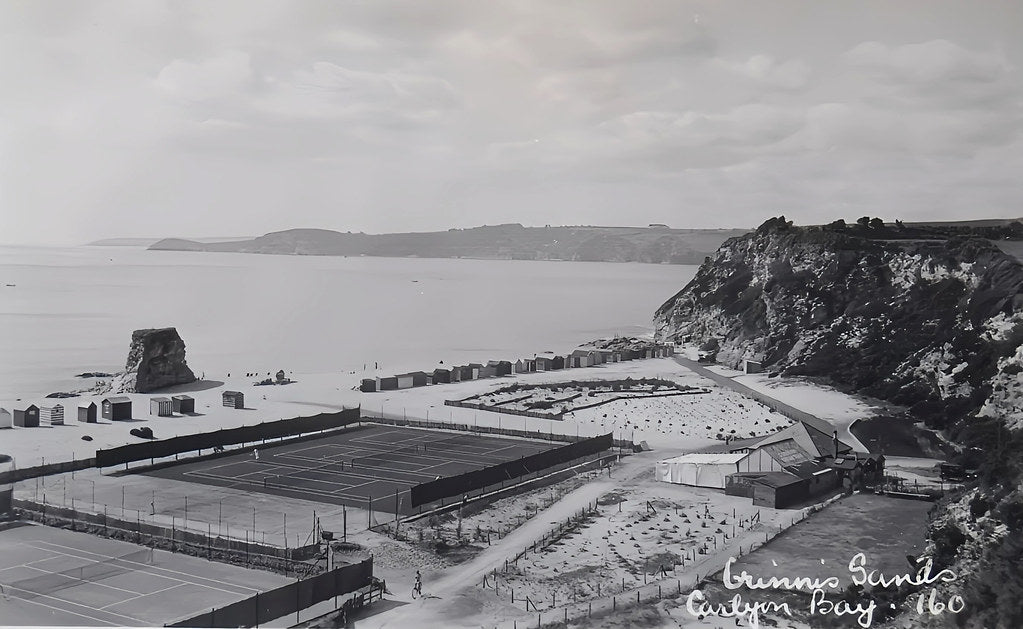
In 1934, a second hotel, the Bayfordbury, was built as a more affordable and modest alternative to its predecessor. Sir George Collins, facing severe financial difficulties, was forced to sell his shares in the hotels to Dr. Wright. Unfortunately, Collins’s troubles deepened, and he was later declared bankrupt, losing all his possessions, including his car. Stripped of his former wealth, he was left to rely on the bus for getting around.
The Riviera Club continued to grow, adding new facilities such as two indoor badminton courts, a billiards room, table tennis room, a French restaurant with sprung dance floor and two bars. The site was promoted as “South Cornwall’s New Sporting Resort,” and was unofficially dubbed a “millionaires’ playground.”. It was a members-only club but guests staying at the hotel were free to use the facilities.

In 1936 a huge 15,000 square-foot building was constructed to house two indoor tennis courts. The 50ft high building was the only covered tennis facility in the West and South of England. Spectator seating was installed around the edges with different areas reserved for club members and the general public, who were admitted for tournament events. It was later used for the West of England tennis championships.
In 1937 plans were announced to build another hotel on the beach, with the roof of the building level with the top of the cliffs, allowing easy access from the golf course.A jetty was also proposed so members could bring their yachts. But the following year the company got into financial difficulty and the Carlton Hotel and golf course were put up for sale by the mortgage company.
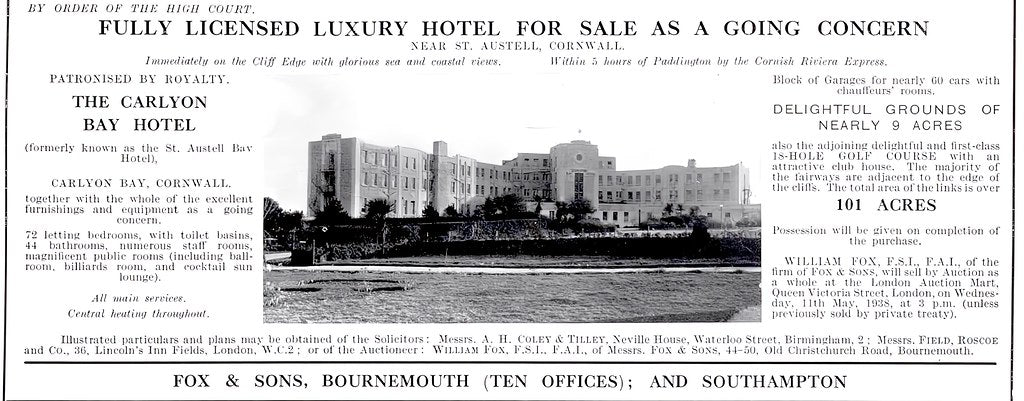
It was sold to Thomas Hill, owner of the Hotel Victoria in Newquay, for £40,000. Construction of the new beach hotel, which had barely started, was stopped and all the building materials, tools and equipment were sold at auction.
In June 1940, both hotels, along with the Riviera Club, were requisitioned to accommodate around 600 “scholars, masters, and domestic staff” from King’s School and St Edmund’s School in Canterbury. School furniture and equipment were transported down to Cornwall via a special train, transforming the hotels into makeshift educational facilities. Classrooms, laboratories, a chapel, and an assembly room were set up, while the grounds hosted rugby, football, and cricket matches. The schools remained at the site for the duration of the war, only vacating at the end of 1945.
The two hotels reoepend to the public in June 1946. The Bayfordbury was renamed the Cliff Head Hotel. The beach, which had remained closed since 1939, was reopened and described as being in a “deplorable state”.
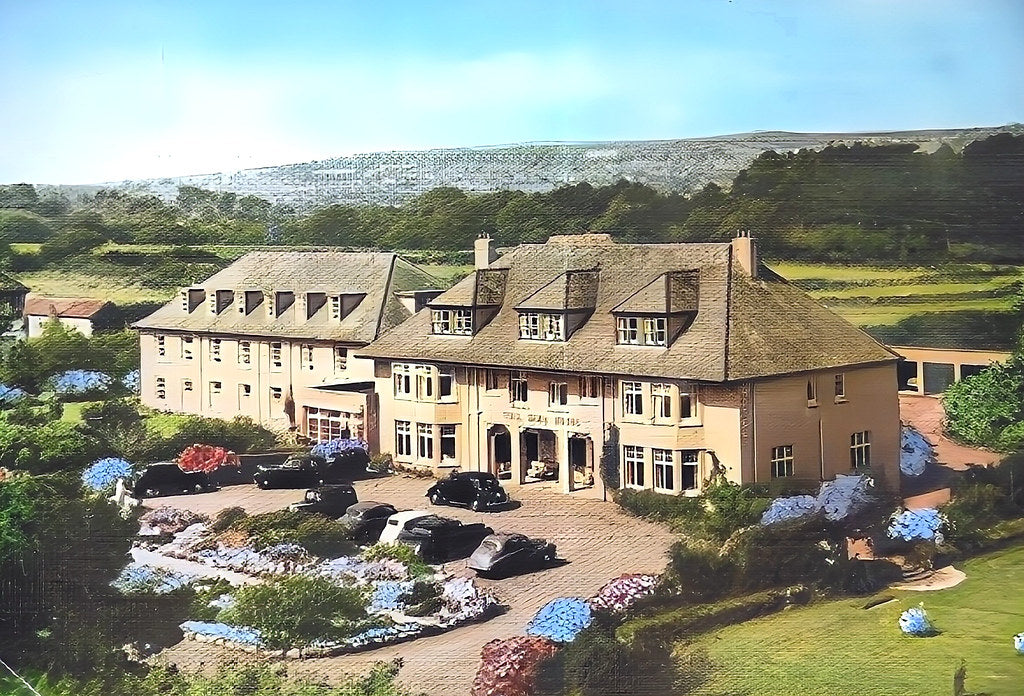
The Riviera Club reopened at Easter 1947 offering full annual membership for 10 guineas. In 1950 a miniature railway was built along the beach
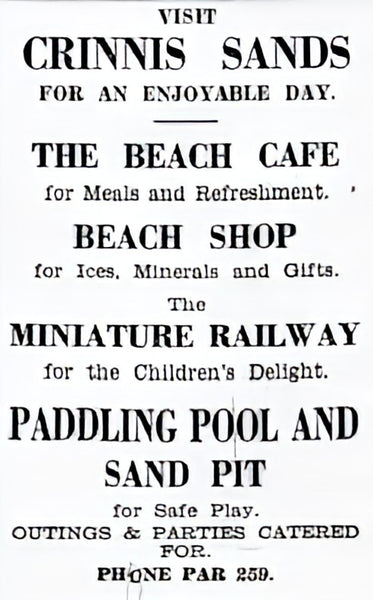
But the wealthy visitors were now a distant memory and the club struggled to stay afloat. It closed in February 1952 and an auction was held in July to sell off the contents of the building along with the beach cafe and deck chair business,
The following year the club was leased to the government, and barbed wire fences and ‘keep out’ signs were erected around the perimeter. Many thought it was being used as some top-secret government laboratory but the reality was far less dramatic: the building was being used as an Air Raid Precaution center. Inside, “the once-luxurious décor of the club has been replaced with tier upon tier of wooden shelving, stretching from floor to ceiling, packed with 35,000 gas masks.”. The beach remained open to the public and the owner of the café expressed frustration over the barbed wire “It’s a scandal. Visitors are constantly complaining.”
The New Cornish Riviera Lido
The government moved out in 1959 and the building sat empty for a couple of years until being bought by 3 businessmen from Maidenhead – William Tull, William Thomas and Norman Brill. They announced plans to replace the indoor tennis courts with 8 lanes of bowling. They also said the pool would be enclosed inside a new building and heated. Neither of which happened. But £15,000 was spent on renovations and the old members-only alcohol licence was replaced by an open licence allowing admission to the general public. The outdoor pool received a new filtration system and the site reopened as The New Cornish Riviera Lido. The beach remained as popular as ever and the miniature railway was still offering rides along the dunes.
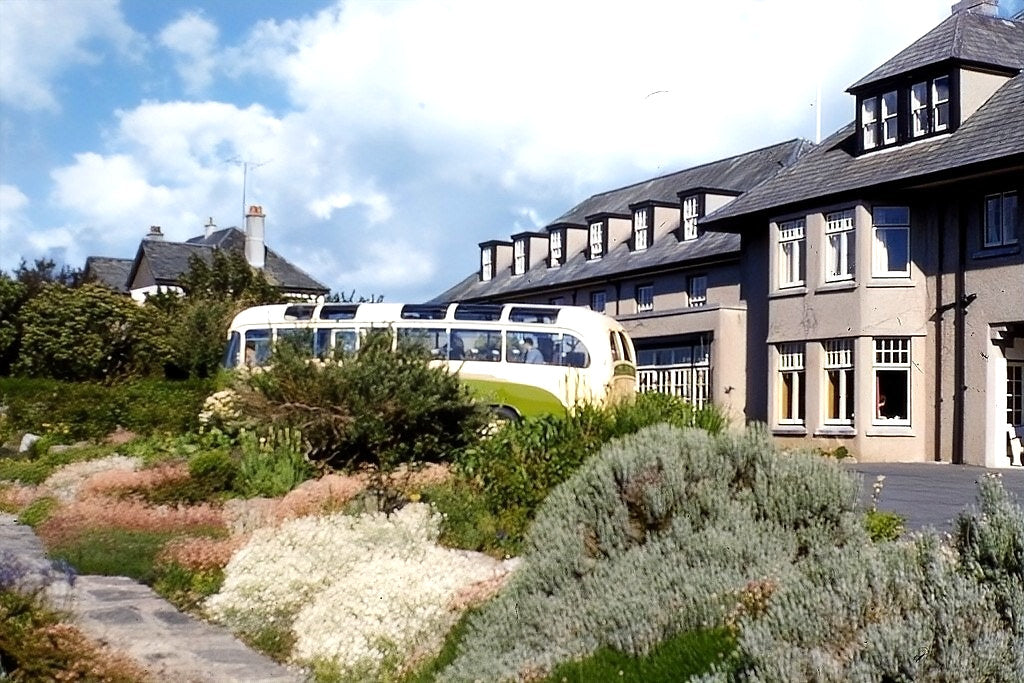

The site remained true to its sporting heritage and remained a popular venue for five-a-side football matches and swimming events. The cavernous tennis court building was considered “the best in the West of England.” and many tournaments were staged, often attracting hundreds of spectators. The badminton courts also remained popular and held their own tournaments attracting many international players.
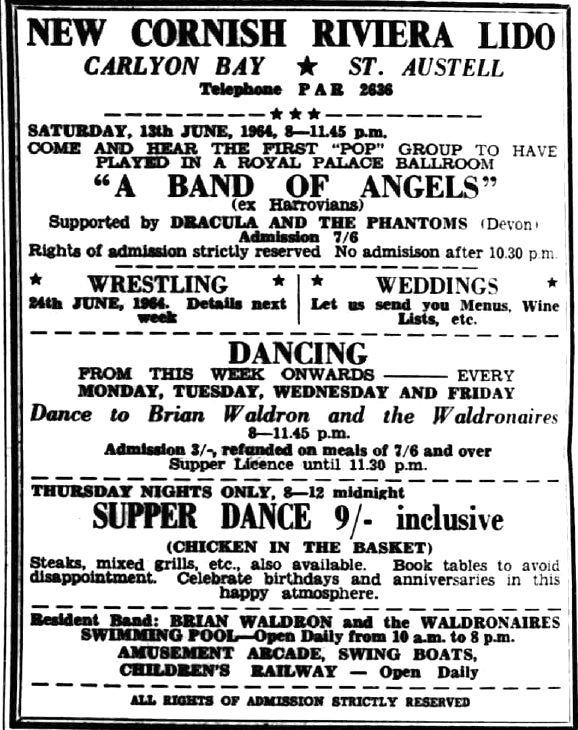
The building also doubled as a venue for concerts, wrestling matches, dances, talent shows and trade shows. The first big music concert featured Monty Sunshine’s Jazzband who appeared in July 1962. The smaller ballroom, which overlooked the swimming pool, also hosted cabaret shows 6-nights a week during the summer, and continued running events for locals during the winter including the popular Thursday night ‘Chicken in the Basket’ supper dance.
Around 1965 the entire complex was bought by the Lovett family and throughout the rest of the 1960s several big name bands played at the site including Herman’s Hermits, Acker Bilk, Monty Sunshine, The Kinks and Procul Harem.
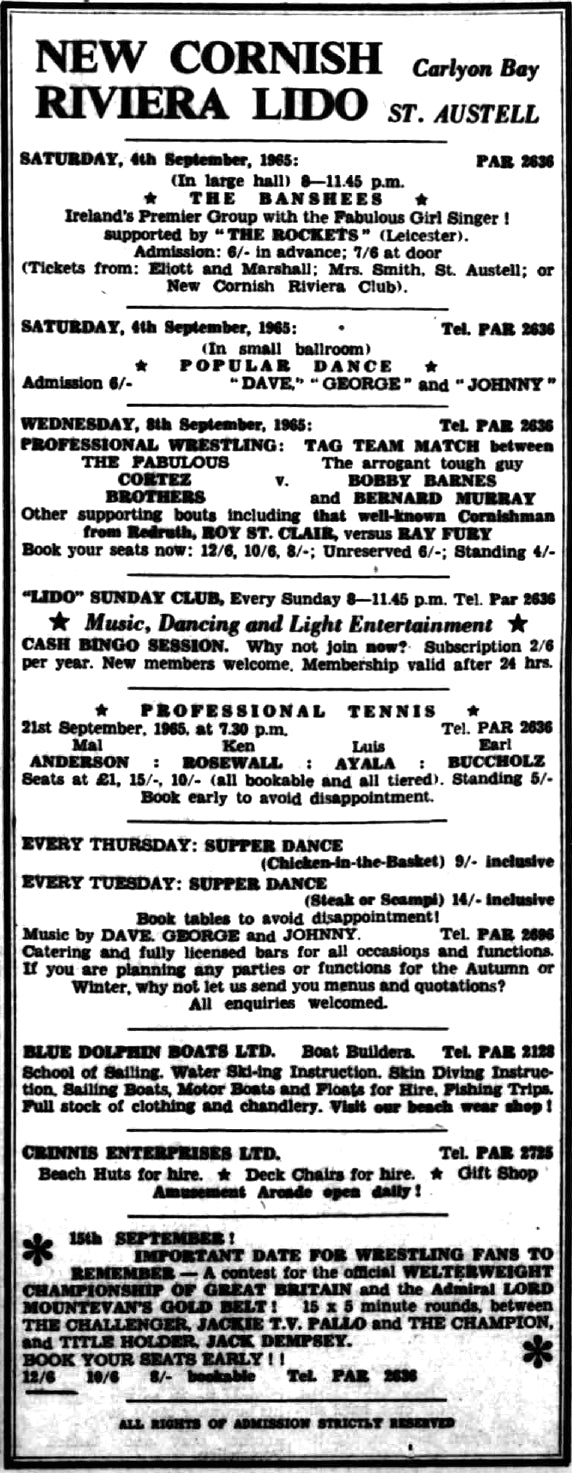
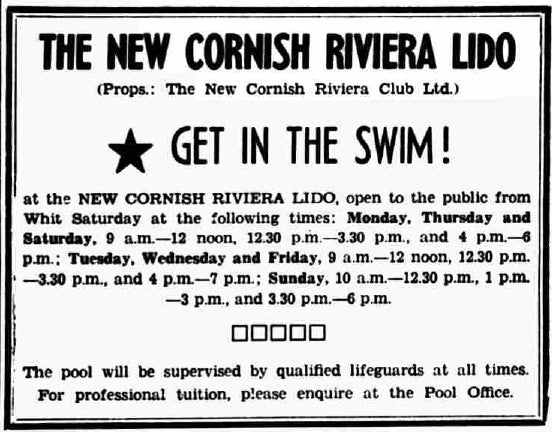
In common with many other attractions, the 1970s saw a sharp downturn in business as changing tstaes and competition from overseas holidays stated to bite. Everything continued much the same and several punk and New Wave bands stopped off to play gigs, along with comedians and other entertainers. But the complex was now losing money and in 1976 it was all sold to Exchange Travel, run by the McNally family. Later that year the Radio One Roadshow first arrived on the beach, an annual tradition that lasted for the next 17 years.



The Cornwall Coliseum
Even though the sporting facilities remained as popular as ever, they weren’t exactly very lucrative. So in 1979 the old tennis court building was gutted inside and completely to transform it into the largest entertainment venue west of Southampton. New tiered seating was installed accommodating 2,306 people. If needed, the seats could be removed to increase the standing capacity to 3,376. A state-of-the-art lighting system was built along with a new stage, dressing rooms and bar.
It was renamed the Cornwall Coliseum and opened in December 1980 with a concert by The Jam. It was soon attracting many of the big names of the era.
Deke Arlon, a music publisher and artist manager, remarked “I have started off several world tours there and it is always my first choice. The whole place has a wonderfully pressure-free environment. It is perfect for rehearsals and the first show, as that is a very stressful time. The staff are great, nothing is too much trouble. The clearance for a big rig is limited, and the stage is a bit small, but these are not major problems compared with all the pluses”.
Derek Block of International Artistes said “It is not purpose built as a concert hall, the ceiling is too low and wherever you put the PA it cuts out seats. It is expensive too. What it does have going for it is that it’s the only venue of its size in a 50 mile radius”.
As before, the venue was also used for trade shows, dances and exhibitions. In 1980 400 railway enthusiasts showed up for a film show by John Huntley about the Great Western Railway.


The old badminton courts were ripped out and converted into a disco known as Beezlebub (later becoming Bentleys, then Quasars, and then Gossips) The old squash courts in the basement became a beer cellar.
Around the same time a new structure was built next door housing an amusement arcade, Wimpy restaurant and a roller skating rink known as the Riviera Rollerdome.
Cornish Leisure World
In January 1981 the whole complex was renamed Cornish Leisure World and later that year Polgaver beach was fenced off to become Britain’s first commercially run naturist resort. It was officially opened by comedian Freddie Starr, and admission was 1 (kids free). The Radio One Roadshow returned every summer attracting thousands of visitors.

Unfortunately the new venue was not a financial success, losing £280,000 in 1981. The following year the complex was put up for sale with assurances that that it wasn’t closing and would remain open even if a buyer cannot be found. A buyer wasn’t found. 16 people were made redundant and everything continued as before.
In 1986 pop star Alison Moyet filmed a video at the complex for her hit single ‘Is This Love?’. The video featured an old ‘shipwrecked’ boat that was brought to the beach in 1978 as a prop for a Dracula movie that was being filmed in the area. After the film crew left, the boat remained as a plaything for kids. It was destroyed by a storm in 1989.
Unfortunately the financial situation did not improve and in 1987 planning permission was sought to build a holiday village on the beach. The owners said the site would probably close if the plans were rejected. “It is not a question of blackmail. This is reality. The situation is that we do not have a long term future in our present state”. The plans were approved, but the project was dependent on finding a partner to pay for it all. And none was forthcoming.

In 1988, the site actually turned a profit of £92,000, but the following year it was sold for £4.3 million to Kenegie Manor Ltd, an upmarket holiday park operator. One of the company’s directors remarked, “We understand it has been losing money and have no intention of continuing those losses.” They announced plans to demolish everything and build their own holiday complex.
A “farewell concert” featuring Billy Connolly was held in August 1989. However, just a month later, the owners reconsidered their plans due to the ongoing recession, granting the venue an 18-month reprieve. It reopened in November with a concert by Transvision Vamp.
In 1991, the £9 million Pavilions complex opened in Plymouth city center. As expected, this modern state-of-the-art venue began to siphon off a significant portion of the Coliseum’s business, with reports suggesting that half of the Coliseum’s customers came from Plymouth. However, the Coliseum achieved a remarkable coup that year when Paul McCartney performed a last-minute gig to a crowd of 3,300 fans.
By the mid-1990s, the whole site was looking very rundown. Fewer holidaymakers were coming to Cornwall which meant fewer visitors to the beach. The miniature railway closed after running for over 40 years. The last Radio One roadshow was held in 1993. The old 1930s Coliseum building had a leaky roof and was struggling to secure big name bookings, a stark contrast to the heyday years of the 1980s. In 1997, the building underwent a quick revamp and was relaunched as the New Coliseum. The former promoter from the Plymouth Pavilions was lured away to run the venue.
Unfortunately the relaunch was not a success and the last concert was held in 2000, by the Cornwall Youth Brass Band. The complex closed down with just the nightclub remaining open. In 2003, that too closed. The following year it was sold to new owners who removed the old Coliseum roof due to dangerous structural issues.
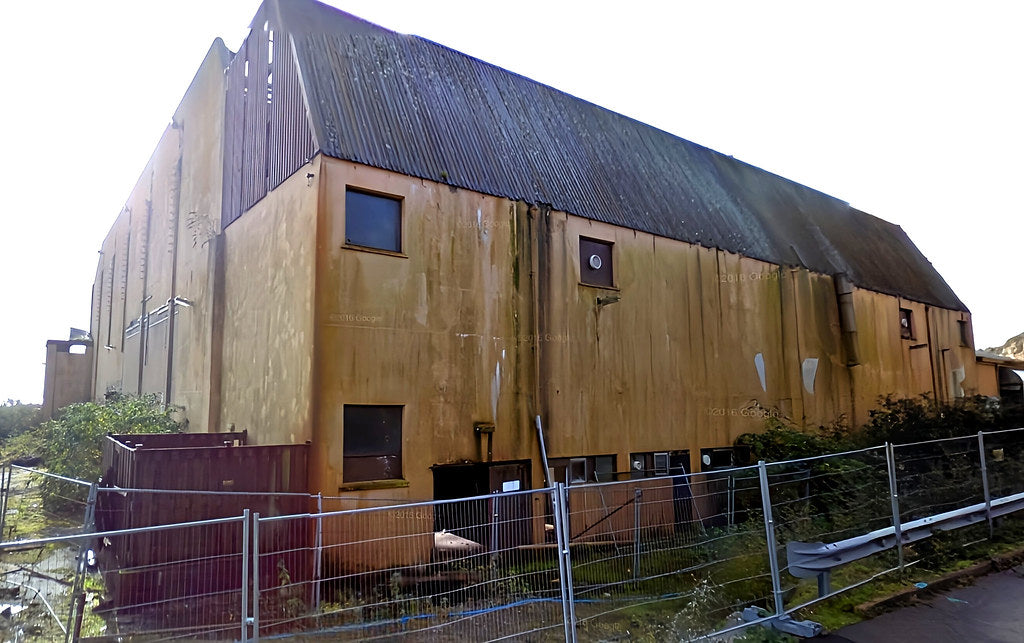
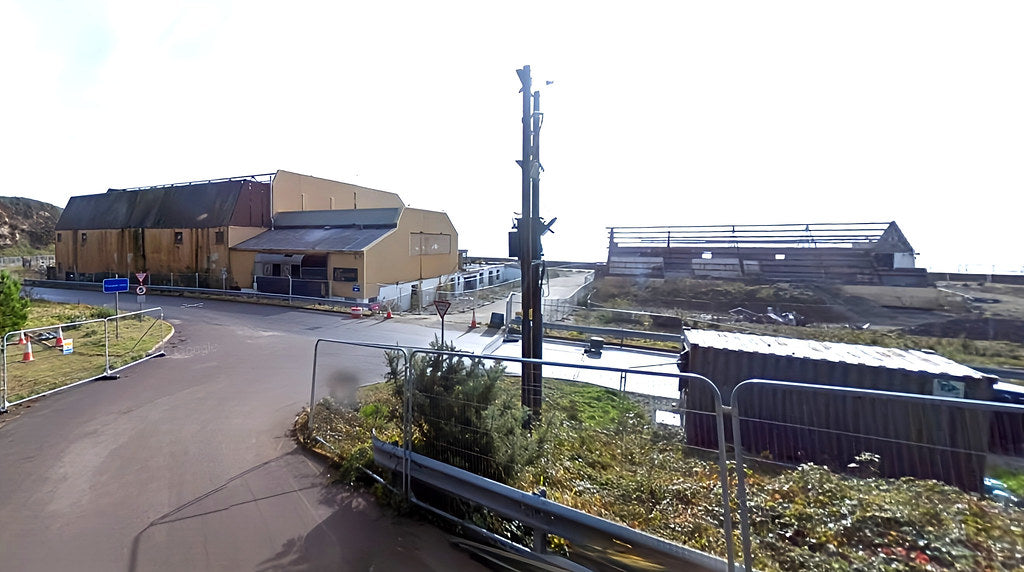
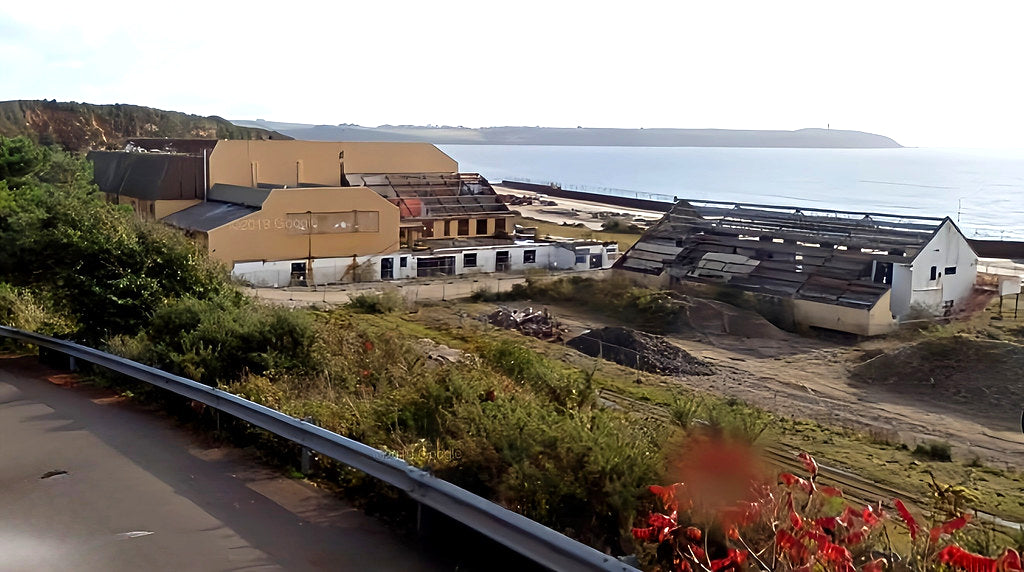
In July 2011, Cornwall Council approved a new planning application for 500 luxury apartments and associated facilities on the beach. The developers, initially Ampersand and later Commercial Estates Group (CEG), planned to commence work on sea defenses in late 2011 and on the apartments in spring 2012. But construction was delayed due to various factors, including legal battles and public inquiries.
After sitting abandoned for 12 years the sad remains of the roofless building, now with trees and bushes growing inside, was demolished in 2015. The swimming pool was filled in. The site was entirely cleared with nothing left standing.
As of the time of writing (2024) not much has happened. The beach is currently empty.
Some of the more well known artists who appeared at the Cornish Riviera Lido/Cornwall Coliseum from the 1960s to the 1990s (not complete)
10cc, Acker Bilk, Adam and the Ants, Alexander O’Neal, Andy Williams, Bernard Manning, Billy Connolly, Billy Jo Spears, Black Sabbath, Blondie, Bon Jovi, Chuck Berry, Cliff Richard, Culture Club, Dame Vera Lynn, David Essex, Don McLean, Duran Duran, Echo and the Bunnymen, Elaine Paige, Elton John, Elvis Costello, Eric Clapton, Gary Barlow, Genesis, Herman’s Hermits, Iron Maiden, Jethro Tull, Jim Davidson, John Denver, Madness, Marillion, Meatloaf, Mike Oldfield, Monty Sunshine, Motorhead, Paul McCartney, Robert Plant & Jimmy Page, Shakin’ Stevens, Shirley Bassey, Simple Minds, Squeeze, Status Quo, Tammy Wynette, Tears for Fears, The Alarm, The Cure, The Everly Brothers, The Jam, The Kinks, The Moody Blues, The Nolans, The Police, The Ramones, The Shadows, The Smiths, The Stranglers, The Who, Thin Lizzy, Tina Turner, Tom Jones, Toyah Wilcox, Transvision Vamp, Vanilla Ice, Wham.
Radio One Roadshows at Carlyon Bay
- 1976: Dave Lee Travis
- 1977: Paul Burnett
- 1978: Dave Lee Travis
- 1980: Tony Blackburn
- 1981: Peter Powell
- 1982: Paul Burnett
- 1983: Mike Read
- 1984: Gary Davies, Simon Bates, & Steve Wright
- 1985: Mike Read
- 1986: Peter Powell
- 1987: Steve Wright
- 1988: Peter Powell
- 1989: Steve Wright
- 1990: Gary Davies
- 1991: Philip Schofield
- 1992: Nicky Campbell
- 1993: Simon Mayo
What happened to everything else?
The Cliff Head Hotel was demolished in 2017 and the site is now occupied by an upmarket retirement home called Ocean House. The Carlyon Bay Hotel is still open, as is the golf course.
Leave a Reply